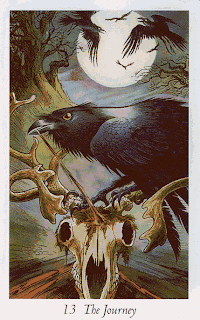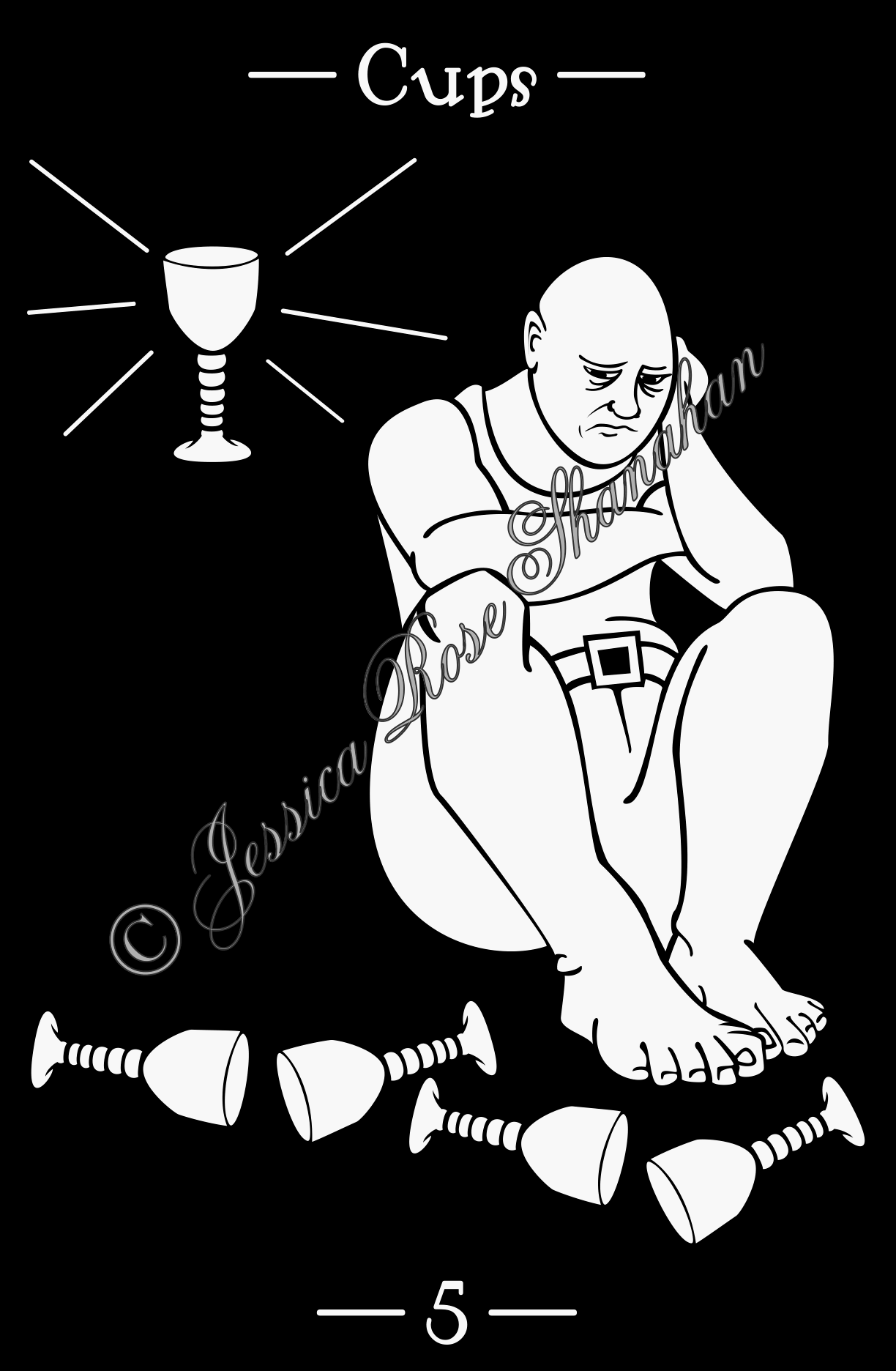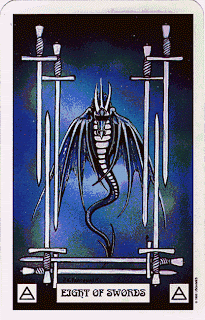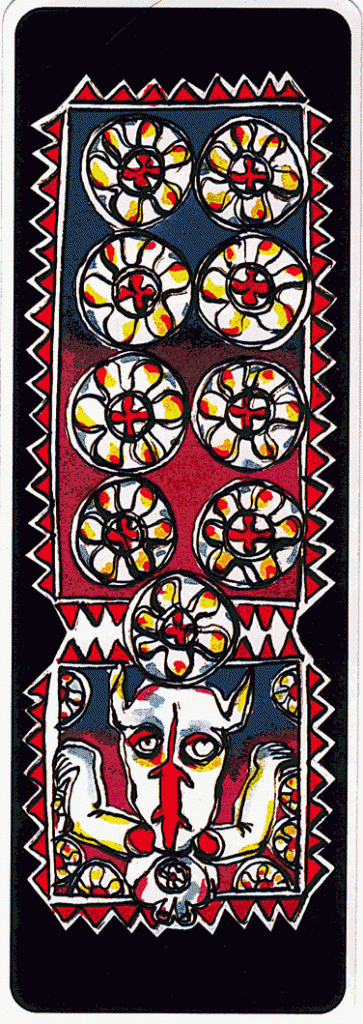
[NOTE: Notes within brackets within quotes are my notes, not quotes.]
Artist: Walter Wegmüller
Interpretation: “Symbolic of a profitable training course or experiences. [Knowledge as wealth.]
“The Three of Pentacles also represent the three time references where money is concerned: savings (past), use (present), and investment (future). [These numbers may be negative or positive.]
“In yet another sense, it also stands for coined money [most often fiat money, without intrinsic value yet endorsed by the government], toy money [unendorsed, legal money: virtual money; Monopoly money; money from another country] and counterfeit money [unendorsed, illegal money: stuff that seems real but isn’t; something too good to be true].”
The oldest decks depicting little round discs with symbols on them used the term “coin” to denote the suit. “Pentacle” is a later term, associated with tarot after the deck took on occult meaning. Technically, a pentacle is an amulet used in magical evocation on which the symbol or spirit or energy being evoked is depicted. In tarot decks, a pentacle it is usually denoted as a coin with a pentagram inside.
I like how the author/ illustrator of the deck calls the suit “pentacles” without illustrating the usual pentagram. Instead, he fills his coins (and his cards) with magical images from around the globe. However, his use of the term “pentacle” conflicts with how strongly he relates all his pentacles to actual money instead of to more general, practical, earthy and material matters. Money is a societal convention. It is not the most important form of wealth at all. Our society is too focused on money money money.
I leave money out of the suit of pentacles— tho I do call it coins. The three of coins reminds us that one form of wealth is the skill necessary to accomplish a goal. Good planning and organization are necessary to succeed and to improve the quality of life. Learn well, work hard and stay on top of things. With a little luck thrown in the mix, you will succeed.
Now I need to tell that to myself and get a move on finishing this deck.













